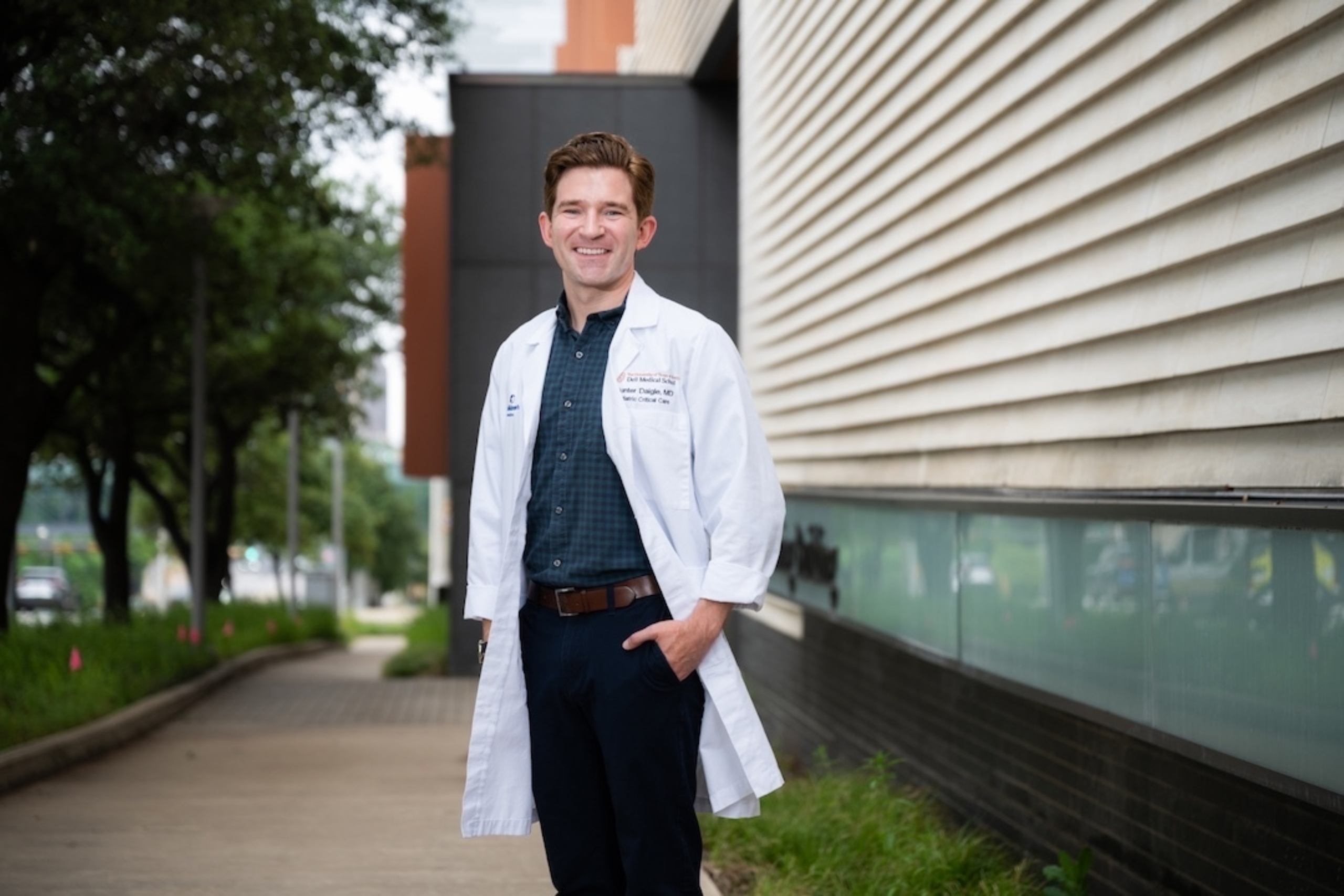When a child goes into cardiac arrest, every second counts — and Hunter Daigle, M.D., wants to make sure those seconds are used wisely.
As a pediatric critical care physician and assistant professor of in the Department of Pediatrics at Dell Medical School, he brings that mission into every part of his work. Whether caring for critically ill patients in the pediatric intensive care unit at Dell Children’s Medical Center or designing high-stakes training simulations for response teams, his focus remains the same: improving how teams respond during pediatric resuscitations.

Hunter Daigle, M.D.
Q&A With Daigle:
What sparked your focus on improving how teams respond to medical emergencies?
What brought me here is a deep belief in systems-based improvement and education as tools to drive change. During my fellowship at the Children’s Hospital of Philadelphia, I became involved in NEAR4KIDS, a national registry studying airway management in critically ill children. That experience lit the spark for a career centered on bridging frontline patient care with multicenter quality improvement research; it made me realize how much potential there is to improve outcomes through both new treatments and better systems.
Since then, I’ve worked to build simulation-based programs at Dell Children’s that help teams prepare for pediatric resuscitation events with real-time feedback, structured team roles and targeted training. It’s about making sure the environment sets people up to succeed, not just hoping individual skill will carry the day. Improving outcomes in pediatric resuscitation doesn’t always require new medications or technology — it often comes down to improving how teams communicate, how they’re trained and how their environment is structured. I’ve had the privilege of wearing many hats — bedside clinician, simulation educator, resuscitation researcher — and it’s this intersection that really defines my approach.
Success isn’t just in survival rates. It’s in empowering clinicians to step up and make a difference when it matters most.
Hunter Daigle, M.D.
What do people often misunderstand about pediatric cardiac arrest?
Pediatric cardiac arrest is rare, but when it happens, it’s one of the most critical and time-sensitive emergencies a hospital team can face. The outcome often depends not just on what we do, but how efficiently and cohesively we do it. These aren’t everyday emergencies, so if teams aren’t regularly practicing how to respond, it’s easy to lose time or coordination in the moment. The margin for error is thin, and even highly skilled providers can struggle without the right tools, roles and support in place.
One of the most powerful tools we’ve implemented is the CPR coach — a dedicated team member who guides compressions, provides feedback and keeps everyone focused. It’s a simple shift, but one that can change everything in a code event. We’ve also redesigned CPR carts and introduced real-time feedback tools to support the team during those crucial minutes. Sometimes, the biggest improvements come not from advanced technologies but from optimizing communication and workflow.
How do you measure success in a field where the stakes are so high?
A message I received from a nurse after a real code stuck with me. She’d taken on the CPR coach role we’d trained her for and later shared how proud she was to have helped facilitate a successful resuscitation — she knew her presence changed the outcome. That moment was a reminder: The work we do in simulation — the structure we build — it’s not just theoretical. It gives people the confidence to lead when lives are on the line. It’s incredibly rewarding to help others feel empowered to step into roles where they can make a difference in a child’s life.
My involvement in multicenter initiatives like NEAR4KIDS, pediRES-Q and the American Heart Association’s Get with the Guidelines connects our work at Dell Children’s with national efforts to improve resuscitation practices. At the same time, leading simulation education locally allows me to translate those big-picture findings into real, hands-on changes that directly affect how our teams deliver care. They shape how people show up for the most vulnerable patients when it matters most. Success isn’t just in survival rates — it’s in empowering clinicians to step up, organize a team and make a difference when it matters most.